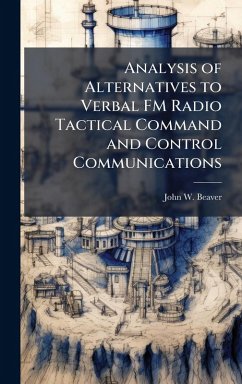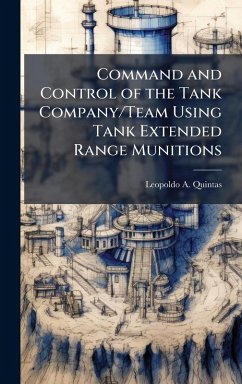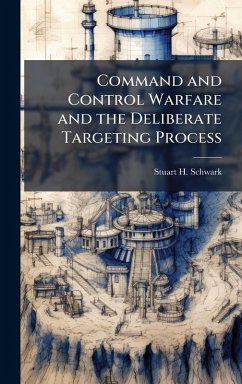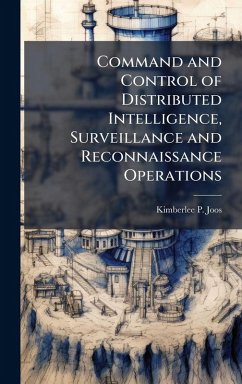
Command and Control
Versandkostenfrei!
Versandfertig in über 4 Wochen
27,99 €
inkl. MwSt.
Weitere Ausgaben:

PAYBACK Punkte
14 °P sammeln!
This study uses an historical analysis of German pre-World War II tactical command and control doctrine and documented field experience from the intense fighting on the Eastern Front, November 1942 - March 1943, to identify tactical command and control (C2) principles which have proven successful on a modern high intensity battlefield. Once identified, these principles are then used as a basis for examination of current US Army tactical (C2) doctrine and field training experience. From this examination, current US Army tactical C2 doctrine will fall short of meeting the requirements for the fu...
This study uses an historical analysis of German pre-World War II tactical command and control doctrine and documented field experience from the intense fighting on the Eastern Front, November 1942 - March 1943, to identify tactical command and control (C2) principles which have proven successful on a modern high intensity battlefield. Once identified, these principles are then used as a basis for examination of current US Army tactical (C2) doctrine and field training experience. From this examination, current US Army tactical C2 doctrine will fall short of meeting the requirements for the future high intensity battlefield. Among other conclusions which are drawn from this examination of German and current US Army tactical C2 are: sound pre-war doctrine is essential to an army's ability to successfully adapt to the reality of the actual battlefield; despite historical evidence and an apparent emphasis on decentralized tactical C2, current US Army C2 doctrine and practice stress an increasingly centralized approach to tactical C2; and current US Army doctrinal C2 publications are both internally and externally contradictory. The study includes definitions for tactical command and control, leadership, and Auftragstaktik as well as a comparison of the differences in philosophy between centralized and decentralized C2. This work has been selected by scholars as being culturally important, and is part of the knowledge base of civilization as we know it. This work was reproduced from the original artifact, and remains as true to the original work as possible. Therefore, you will see the original copyright references, library stamps (as most of these works have been housed in our most important libraries around the world), and other notations in the work. This work is in the public domain in the United States of America, and possibly other nations. Within the United States, you may freely copy and distribute this work, as no entity (individual or corporate) has a copyright on the body of the work. As a reproduction of a historical artifact, this work may contain missing or blurred pages, poor pictures, errant marks, etc. Scholars believe, and we concur, that this work is important enough to be preserved, reproduced, and made generally available to the public. We appreciate your support of the preservation process, and thank you for being an important part of keeping this knowledge alive and relevant.












